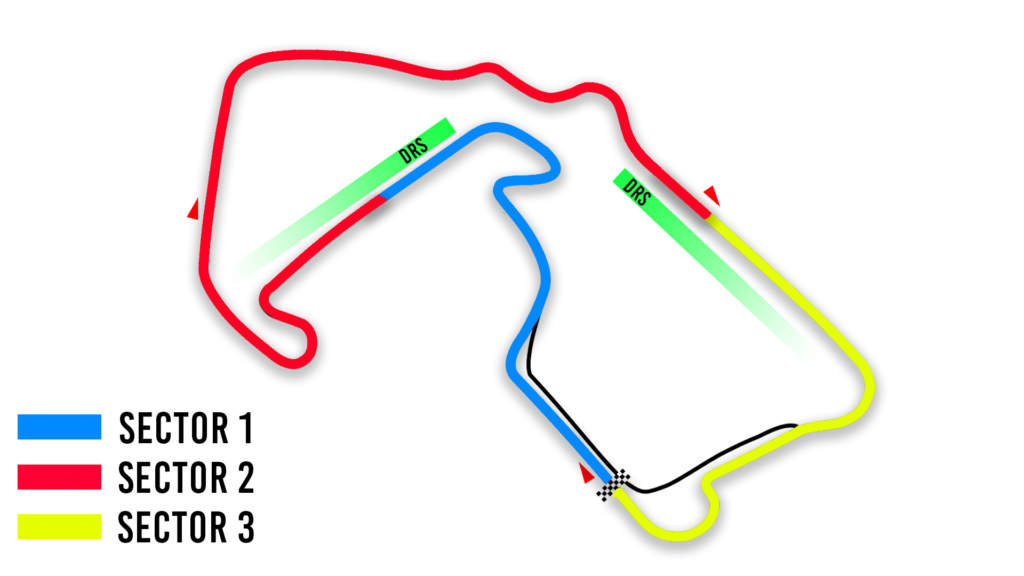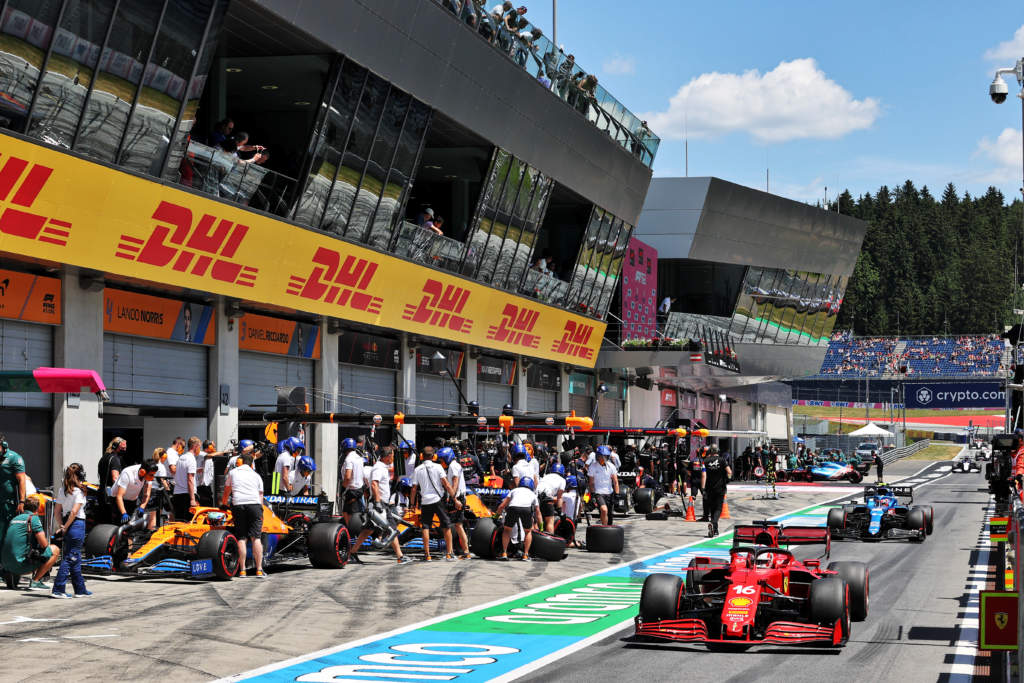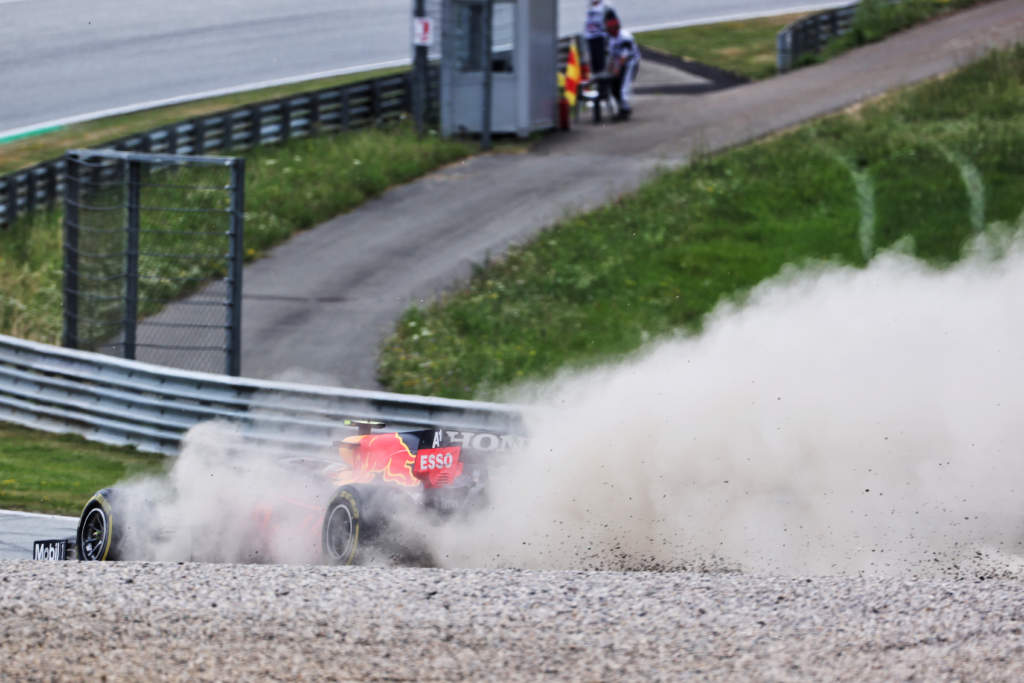Up Next

Red Bull Ring qualifying once again brought up the usual Formula 1 controversy surrounding cars crawling round at the end of their warm-up laps to cool tyres or find a gap in the traffic.
It’s a problem F1 needs to get on top of as it doesn’t only happen in Austria, with the Hungaroring later this month the next track where this is a problem.
FIA race director Michael Masi told the teams and drivers on Friday evening that, as it said in the notes issued the next morning, “any driver intending to create a gap in front of them in order to get a clear lap should not attempt to do this between the entry to Turn 9 through to the exit of Turn 10”.
Seb and Fernando's view on *that* Q2 incident 👀#AustrianGP 🇦🇹 #F1 pic.twitter.com/4TxdRX29Mk
— Formula 1 (@F1) July 3, 2021
As a result, Sebastian Vettel has given a three-place grid penalty for impeding Fernando Alonso in Q2. But he was far from the only driver who didn’t follow the race director’s instructions.
There needs to be a hard and fast rule put in place to control this or there will always be a risk. Eventually, it will lead to a massive accident given the speed differences at play.
But any rule needs to suit every type of track. At some circuits, especially Monza, drivers attempt to position themselves for the ideal tow. Remember what happened there in 2019 when the drivers in Q3 had a slow-bicycle race on the out-lap and they all held each other up so much that only Charles Leclerc and Carlos Sainz made it to the line in time to start a lap.
At far more circuits, it’s about finding a gap so you aren’t slowed by turbulence from the car in front of you. But either way, it happens more or less everywhere to a greater or lesser extent because every driver is trying their best to prepare the tyres. While we have very temperature-sensitive Pirelli rubber, this will continue to be a problem.
As Vettel rightly said, he slowed and others jumped him. That led to him slowing again, then having to wait for cars ahead that were making gaps through Turn 9 before he could go again, leading to Alonso catching him.
This is similar to driving on the motorway, especially in the wet. If you leave a gap to the car in front of you some prat jumps into it, then you make a gap again and someone else pops up in it.
Last year, I suggested a maximum sector time that gets updated after each session would be the best way to fix this. The maximum sector time would then be the fastest sector time from the previous session plus a certain percentage.
As Silverstone is the next grand prix, it would be an ideal time to get some control over what is acceptable and what is not. Silverstone is not as tricky or dangerous as some other circuits on this front because it is so open, but we have still seen cases of drivers that are ending a fast lap being caught up with slower cars waiting to start their fast lap.

As a rough example, I have taken the fastest sector times from qualifying for the 70th Anniversary Grand Prix at Silverstone in 2020, which used the same C2/C3/C4 tyre compounds Pirelli has allocated for next weekend. That gives us the following:
Sector 1 – 27.294s
Sector 2 – 34.470s
Sector 3 – 23.335s
Total lap time = 1m25.099s
Multiply those by a factor, say 1.07, and then the maximum section time would become:
S1 = 29.205s
S2 = 36.883
S3 = 24.968
Total lap time = 1m31.056s
This gives a six-second window over the lap for everyone to find a decent track position. The sector times could be each car’s individual sector time or it could be those of a midfield car and not the fastest, otherwise the Haas drivers would be flat out on their warm-up laps.
But it does need to be done as sector times rather than the whole lap time to stop the drivers cruising around the last corner. As I said earlier, circuits like Silverstone are OK because it’s so open, but at somewhere like the Red Bull Ring it’s downright dangerous.
Obviously, when a car leaves the pits it doesn’t trigger the start of section one which is at the start finish line but it does trigger the pit exit speed line so if the same section one time was used times the 1.07 factor it would give the driver a little more time to sort out their track position in that first sector.
I have used the 1.07 factor because it relates to the 107% rule that exists to ensure a car/driver combination is fast enough to compete in a race. But this percentage could be anything so can be finetuned.
Having such a rule would dramatically reduce the scope for the cars to more or less stop before they start their fast laps and also prevent cars running slowly on the racing line on an in-lap or to cool their tyres.

I know these suggestions would need the i’s dotted and the t’s crossed, but once you have the main idea you can work out the detail. That could easily be done in time for Silverstone.
As for the penalty, it’s simple – if you don’t comply with the maximum sector times, then your next lap time is not counted.
If you read the regulations closely enough, there are mechanisms that allow the governing body to just implement these changes on safety grounds, so why not? It’s certainly a safety concern and a huge accident just waiting to happen.
It would also be interesting to see which of the teams shouts loudest and which of them says, ‘OK, let’s give it a shot’.
Add to those changes a consistent way of treating track-limit violations, why not something really leftfield like, say, if a car has all four wheels outside the white line that separates the black part of the track and the painted kerbs on every circuit and at every corner they are out of bounds. Nothing needs to be done, just simply policed correctly.
I can almost guarantee the drivers would hate it initially but when they got used to something that was consistent from track to track and corner to corner they would have more of an idea of what was required of them on every race weekend. Perhaps the spectators and viewers would also know what was happening?
The other thing is these penalties for attempted overtaking manoeuvres that go wrong.

Personally I want to see and invite racing, however I think the three penalties handed out to Lando Norris and Sergio Perez were over the top and I don’t believe either meant to push the other guy off the track.
If you are trying to overtake someone the responsibility to carry out that manoeuvre successfully should be on the overtaking driver. Yes the driver potentially being overtaken might and probably will make their car as wide as possible, but isn’t that what racing is about? You should never be classified as being ahead until you are ahead. I don’t believe that Perez was ahead of Norris or that Charles Leclerc was ahead of Perez.
Other than the drivers that might just have benefited from penalties for the other drivers, I don’t think any of those on the grid would agree with the penalties handed out. The FIA should just wipe the slate clean, remove any precedents that have been set and agree that rubbing is racing.
It might not do anything, but at least it will show that F1 is willing to make changes to find solutions to the problems that are visually so obvious, as opposed to some thinking ‘their’ driver or team is victimised more often than others.
If nothing is done, the same controversy will rear its ugly head more or less every race weekend.
We, and I include the teams and drivers in that, want consistency and for that things need to be defined in black and white.
The only thing that’s been consistent in F1 recently seems to be inconsistency.







